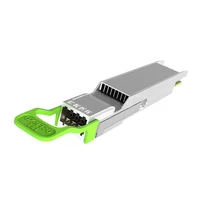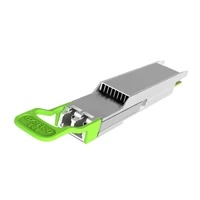The OSFP-XD connector is a significant innovation in optical transceiver technology, which has been created to meet the increasing demand for data transfer speed, bandwidth, and efficiency in high-performance networks. Network engineers, IT professionals, and decision-makers need to understand the specifications, capabilities, and advantages of OSFP-XD as industries shift towards more data-intensive applications. This guide discusses its technical details by looking at design features and performance metrics and how they can be integrated into existing network architectures worldwide. The goal of this article is to give readers enough information so that they can assess whether or not they should use this innovative technology.
What is the OSFP-XD Connector?
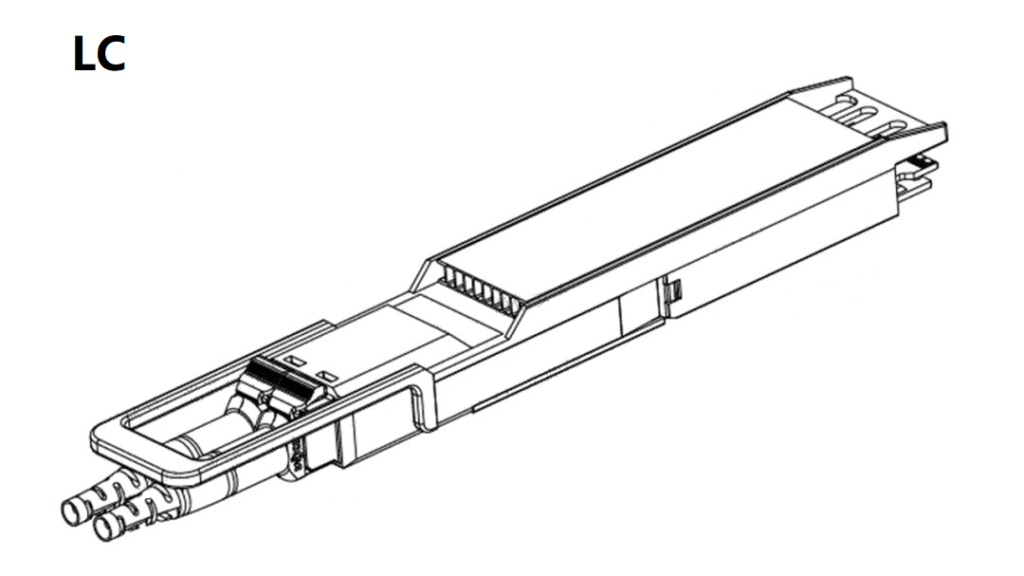
Overview of the OSFP-XD Connector
The OSFP-XD (Octal Small Form-factor Pluggable – Extended Density) connector is a modular optical transceiver interface for high-speed data transmission in progressive network environments. It extends the established OSFP architecture to higher densities while still being compatible with existing systems. With a maximum supported data rate of 800 Gbps, it can be used in data centers, cloud computing and high-performance computing applications. Its design addresses the growing bandwidth demand and improves overall system performance by enabling efficient heat dissipation. With its excellent performance characteristics, this compact connector is well-suited for next-generation networking solutions.
Key Features of the OSFP-XD
The OSFP-XD connector has key features that improve its function and use in today’s networking environments.
- High Data Rates: The OSFP-XD supports data transmission speeds of up to 800 Gbps, thus catering to bandwidth-intensive applications without reducing performance.
- Extended Density: This connector allows more ports to be designed into a smaller physical space, essential for optimizing real estate in a data center.
- Backward Compatibility: This device works with the existing OSFP system, making it easy to upgrade and implement without disruption within an organization.
- Enhanced Thermal Management: It has better heat dissipation properties than other types of connectors, ensuring efficient operation and minimizing the risk of overheating during high-performance transfers.
- Versatile Applications: The OSFP-XD can be used in different contexts, such as data centers, cloud services, and high-performance computing, making it suitable for various networking needs.
These characteristics make the OSFP-XD a strategic choice for companies wishing to future-proof their network infrastructures.
Applications of the OSFP-XD
The OSFP-XD connector is made for several high-performance connectivity applications. These include:
- Data Centres: Within data centers, the OSFP-XD is particularly advantageous owing to its compact size and ability to handle high data rates, which enable efficient interconnections in environments where high bandwidth and low latency are crucial. This supports the growing demands of virtualization and cloud computing.
- High-Performance Computing (HPC): The connector is well-suited for HPC applications that require fast information exchange between processors and storage systems. It also supports very high data rates, aiding in achieving faster computation times and optimal resource use.
- Telecommunications and Network Service Providers: The OSFP-XD provides better performance for robust connectivity solutions in telecommunications applications. Its backward compatibility ensures seamless upgrades of service provider networks, while increased port density facilitates scalability with growing demand.
These usages highlight the versatility and importance of the OSFP-XD connector in contemporary networking infrastructure, thereby assisting organizations in meeting changing technological requirements.
How Does the 1.6T OSFP-XD Enhance Data Transmission?
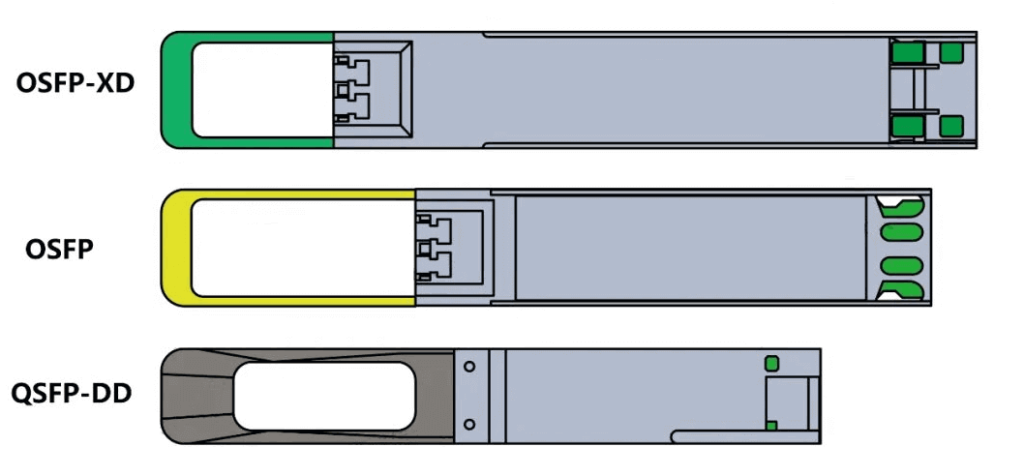
The Role of PAM4 in 1.6T OSFP-XD
Pulse Amplitude Modulation 4-level (PAM4) technology is used in the 1.6T OSFP-XD to revolutionize data transmission capabilities. PAM4 encodes two bits of information per symbol, doubling data throughput compared to traditional Non-Return-to-Zero (NRZ) signaling, which only encodes one bit per symbol. This additional efficiency is critical for addressing modern high-bandwidth requirements like cloud and high-performance computing. Using PAM4 allows the OSFP-XD to support fast data rates while still being small, maximizing its overall performance within contemporary network infrastructures. Such a feature becomes increasingly important as space and energy efficiency gain significance in different settings, thus re-establishing the OSFP-XD as a top solution for large-scale data transmission.
Data Rates and Transmission Speeds
Modern data networks benefit greatly from the 1.6T OSFP-XD connector, which accommodates high data rates and significantly improves transmission speeds. With advanced signaling technology such as PAM4, this device can achieve a maximum port speed of 400Gbps and efficiently transmit large volumes of data. In comparison with traditional connectors, the OSFP-XD provides unprecedented speed enhancements that facilitate increased throughput for applications including, but not limited to, data center interconnects and high-frequency trading platforms.
Furthermore, the design allows multiple lanes within a small space, thus making it suitable for tightly packed network setups while simultaneously boosting performance. In addition to being able to work with different protocols and aligning itself with current standards like 400GBASE-SR8 and 400GBASE-DR4, among others, it ensures that users do not have to settle between fast or reliable service when meeting their organizational needs on information exchange. As such, a highly efficient use of the area combined with very high rates leads us to consider this item one of the most essential parts of the development of future networking technologies.
Comparing 1.6T OSFP-XD to Other Optical Connectors
Data rates, form factor, and compatibility are some of the main factors to consider when comparing the 1.6T OSFP-XD connector with other optical connectors available in the market. The OSFP-XD stands out because it can achieve data rates of up to 400Gbps per port, which is similar to or more than what other high-performance connectors like QSFP-DD and COBO offer. Unlike traditional connectors, which typically do not exceed lower data rates but instead use several lanes and advanced modulation techniques for higher bandwidth support within a compact design.
The architecture of an OSFP-XD enables denser packing without compromising performance as opposed to QSFP-DD, which also supports high data rates but requires disabling adjacent ports for lane configuration changes. In addition, compared to the COBO connector, which provides flexibility in form factor yet may face challenges on compatibility within larger networking environments, OSFP-XD’s compliance with existing standards guarantees smooth integration across various applications. Therefore, among modern optical connectors suitable for next-generation networking requirements is the 1.6T OSFP-XD connector due to its high performance, compactness, and interoperability, making it superior to others.
What are the Benefits of OSFP-XD in Optical Transceivers?
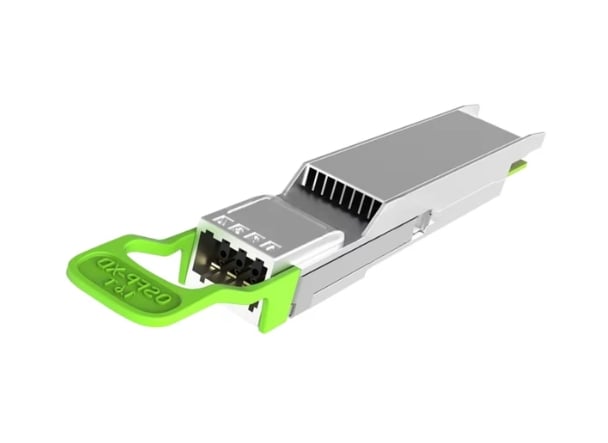
Performance Improvements with OSFP-XD
OSFP-XD connectors outperform conventional optical transceiver interfaces by a wide margin. One of the major advantages of this connector is its ability to deliver enhanced data throughput, which can go as high as 800 Gbps per connector when using two 400 Gbps ports. The increased bandwidth is ideal for applications with very high data rates and low latency, such as data center interconnects and high-frequency trading systems.
Moreover, OSFP-XD supports advanced technologies like wavelength division multiplexing (WDM), which allows several data streams to be sent simultaneously through one optical fiber. This maximizes the use of fibers and lowers operational costs since it reduces infrastructure requirements. Another remarkable feature of OSFP-XD is that it operates within lower thermal limits, thus consuming less power and improving reliability in densely populated areas where high-density deployments are expected. Therefore, these performance improvements make OSFP-XD an essential part of advancing optical transceiver technology, leading to higher-capacity networks.
Compatibility with Existing Network Infrastructure
The OSFP-XD connector has been designed to easily fit into existing networks, making it easier for companies to upgrade their optical systems. According to major industry sources, the connector works with different previous-gen interfaces, such as traditional OSFPs and QSFP-DD form factors. This broad compatibility enables network operators to utilize their prior investments while upgrading to next-gen capabilities without extensive rewiring or changing infrastructure.
Moreover, the OSFP-XD follows established industry standards, thus ensuring that it can work with many optical transceivers and switches from different manufacturers. Such flexibility dramatically lowers adoption barriers since organizations can add this technology on top of what they already have without losing efficiency in operations. In general, the design and compatibility of these connectors represent a strategic innovation in optical tech that encourages scalability and future-proofing within network structures.
Fiber and Copper Cable Assemblies
In modern networking environments, fiber and copper cable assemblies are crucial to data transmission as they provide physical connectivity. Strands of glass or plastic fibers transmit data in the form of light through fiber cables and offer high bandwidth, long-haul communication abilities, and resistance against electromagnetic interference, among other benefits. LC-SC MPO, among other types of connectors, are used in these assemblies so that different equipment can be compatible with various network architectures.
Copper cable assemblies are made from twisted pair cables, which still serve their purpose because they’re cheap and easy to install. This time around, these wires are mainly used for short-distance connections within local area networks (LANs) where standards like Cat5e typically apply. Fiber optics perform better than copper in high-speed applications, but many existing infrastructures still prefer them due to their practicality.
Both types of cable assemblies can be tailored for specific uses to ensure optimal performance and reliability. Their integration with components such as the OSFP-XD connector makes them even better for the network capabilities needed by contemporary society and future networking solutions.
How do you integrate OSFP-XD modules into your network?
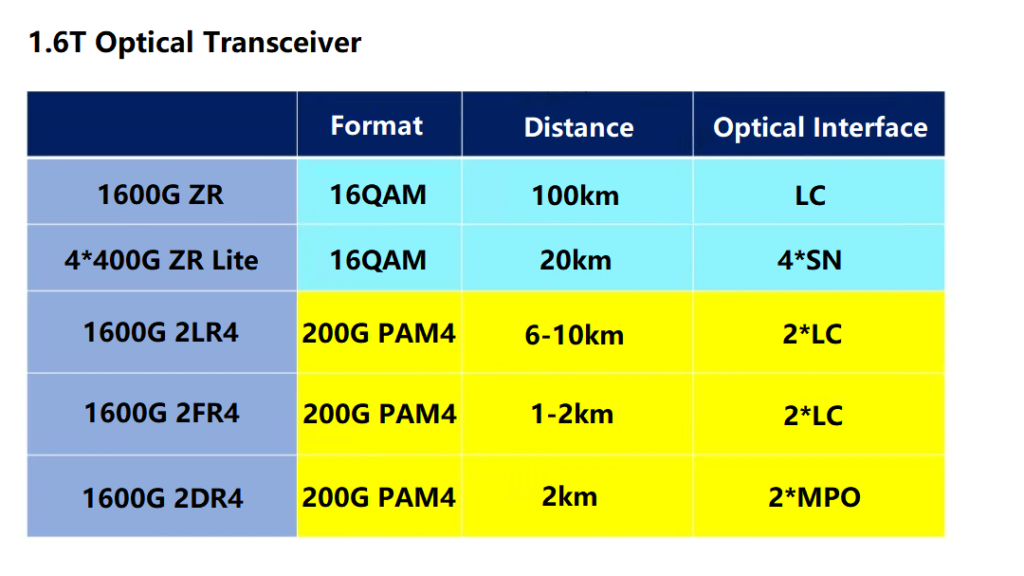
Installation and Setup of OSFP-XD Modules
To successfully implement OSFP-XD modules into your network, there are several steps you must take to guarantee they work well and fit with what is already there. First thing first: check that you have the right equipment for this job — switches and routers need to be compatible with the OSFP-XD format. After that, power down all applicable devices before beginning installation. Carefully insert the module into its place, paying close attention not only to match up correctly but also to make sure it fits appropriately so as not to cause any damage. Once installed, secure using the provided retainers.
Now, it’s time to reconnect power sources and turn on network devices used in conjunction with these modules. It is vital to verify whether they are being recognized, which can be done by accessing the management interface on your device. To test if everything works as expected, run some checks and see whether data rates meet specifications set out initially when planning for the integration process. Lastly, keep an eye out for the performance of newly added components into the broader system and be ready to troubleshoot if things go wrong, adjusting settings where necessary until optimal configuration is achieved.
Ensuring Compatibility and Compliance
For your network, it is essential to ensure that OSFP-XD modules are integrated in a way that fits and follows industry standards. Check with the technical specifications given by manufacturers of switches and routers to see whether the existing hardware supports the OSFP-XD format. You can consult product documentation or contact vendor support for any clarification on compatibility.
Moreover, ensure that these modules meet relevant standards like IEEE 802.3 and MSA specifications; this will guarantee interoperability between different networking components and uniformity in performance metrics. Also, regularly updating firmware on network devices can increase their compatibility with newly deployed modules.
Assess environmental conditions at installation sites, such as temperature and humidity, because they affect module performance life span, among other things. If you want your organization’s infrastructure to be easily integrated into its OSFP-XD infrastructure, comply with the rules above.
Maintaining and Troubleshooting OSFP-XD Connectors
For OSFP-XD connectors to function and be maintained properly, they must be frequently checked for signs of dirt or other materials on the connection points. Cleaning materials like lint-free wipes and isopropyl alcohol should be used gently to remove dirt on these connectors because even small amounts can lead to poor performance.
Monitor the signal integrity metrics and throughput data to detect problems early enough. Updating firmware regularly might help solve compatibility issues that could come up over time. If there are still problems with connectivity after this step has been taken, then run diagnostics tests, which should include checking if cables have been damaged and ensuring that modules fit well into their ports.
All maintenance work done and problems encountered during troubleshooting should always be documented so that when similar situations arise again, they can be quickly resolved. These guidelines will ensure better reliability and performance for all your network infrastructure’s OSFP-XD connectors.
What Industry Applications Utilize OSFP-XD?
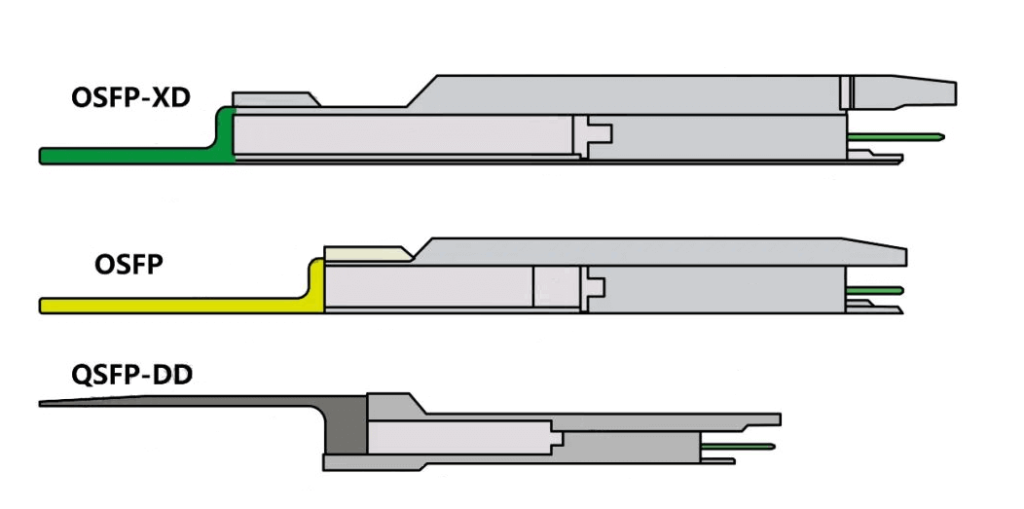
Telecommunication and Data Centers
Due to its better performance and efficiency, OSFP-XD technology is mainly used in telecommunications and data centers. To meet the rising need for higher bandwidth and lower latency in-network services, telecom providers use OSFP-XD modules. These modules enable seamless data transmission over long distances, which helps next-generation networks like 5G infrastructure.
OSFP-XD connectors help optimize interconnectivity among different devices in data centers. Because these connectors handle heavy data loads, data centers can work efficiently with very little latency while maximizing throughput. With increasing data workloads, OSFP-XD modules also provide scalability that allows easy upgrades of a facility’s infrastructure without significant reforms. This flexibility enhances operational performance and saves money by minimizing frequent equipment replacements.
Storage Solutions and High-Performance Computing
The OSFP-XD connector is important for storage solutions and high-performance computing (HPC) environments. In storage architectures, these connectors allow fast data access and transfer speeds critical for low latency, high throughput applications. They work with different storage technologies like NVMe and SSD deployments to improve data flow between compute and storage resources.
In HPC, the OSFP-XD technology provides efficient connectivity among nodes in supercomputers that run complex simulations and data-intensive workloads. The modules support high data rates, which contribute to the overall performance of HPC applications by ensuring large datasets are processed quickly and efficiently. This is essential to supporting research or development across many scientific and commercial fields.
Future Trends and Innovations
The field of data connectivity and high-performance computing is constantly changing, with many trends impacting its future. First, data management systems are likely to become more efficient by incorporating artificial intelligence (AI) and machine learning (ML), which will allow for predictive analytics that can improve resource allocation in the OSFP-XD modules. Second, as sustainability takes center stage in data center operations, energy-efficient designs are being developed to reduce power usage while still delivering high-performance levels. Finally, 400G Ethernet technology implementation in OSFP-XD interfaces will facilitate seamless communication across networks and boost overall system efficiency due to increased bandwidth requirements from cloud computing and big data applications. All these trends suggest that OSFP-XD technology is evolving towards scalable, efficient and sustainable data infrastructures.
Reference Sources
Frequently Asked Questions (FAQs)
Q: What is an OSFP-XD connector?
A: The OSFP-XD connector is a state-of-the-art optical transceiver module employed in data centers and fast networks. It can transmit up to 800G of data, accommodating more density and bandwidth than traditional connectors.
Q: What is the form factor of OSFP-XD connectors?
A: Due to their small size and pluggable design, OSFP-XD connectors are ideal for data centers where space-saving measures are essential.
Q: How does the OSFP-XD compare with QSFP-DD?
A: Compared with the QSFP-DD, which has a capacity of 400G, the OSFP-XD’s higher density allows for better performance at speeds up to 800 Gbps. Its thermal management system outperforms its counterpart due to improved signal integrity (SI).
Q: What is the maximum reach of OSFP-XD modules?
A: With a transmission range of 2 kilometers or less, these optical modules are appropriate for connecting different parts within large data centers.
Q: Are OSFP-XD connectors pluggable?
A: Yes, since they’re hot-swappable and do not require shutting down any devices before inserting them back into place again, you can easily remove them from one device and put them into another without powering off either machine first.
Q: Which companies are at the forefront of manufacturing OSFP-XD connectors?
A: Among the top companies in the market that provide high-speed OSFP-XD connectors are Yamaichi Electronics and Amphenol.
Q: What does OSFP MSA stand for and why is it important?
A: The significance of OSFP MSA (Multi-Source Agreement) lies in its role as a consortium of companies that defines specifications and standards for OSFP connectors, guaranteeing consistent quality and interoperability across different manufacturers.
Q: How does the design of an OSFP-XD help with heat management?
A: The advanced thermal management features included in an OSFP-XD’s design contribute to better heat dissipation, thus supporting applications requiring high speed and density.
Q: Where can I commonly find these types of connectors being used?
A: High-speed interconnect solutions, data center networks, and HPC environments are widely used. They are also found in applications that have low latency but require very high bandwidth.
Q: Is it possible to use these new connectors on old infrastructures?
A: Yes, because they’re backward and compatible with existing infrastructures like QSFP-DD, which makes upgrading easy for data centers looking to improve their network performance.

